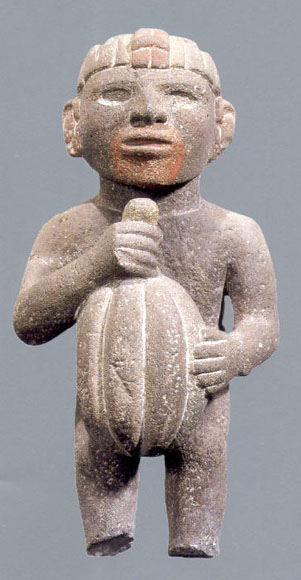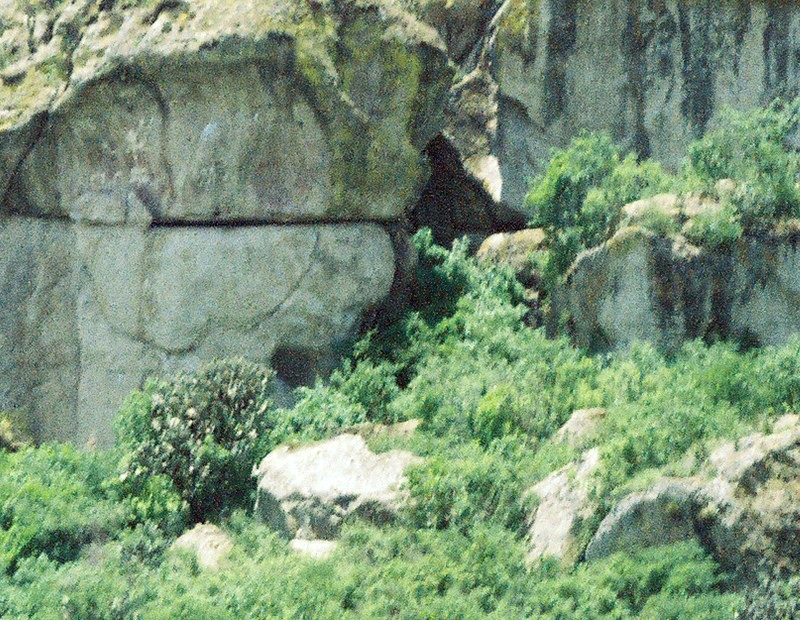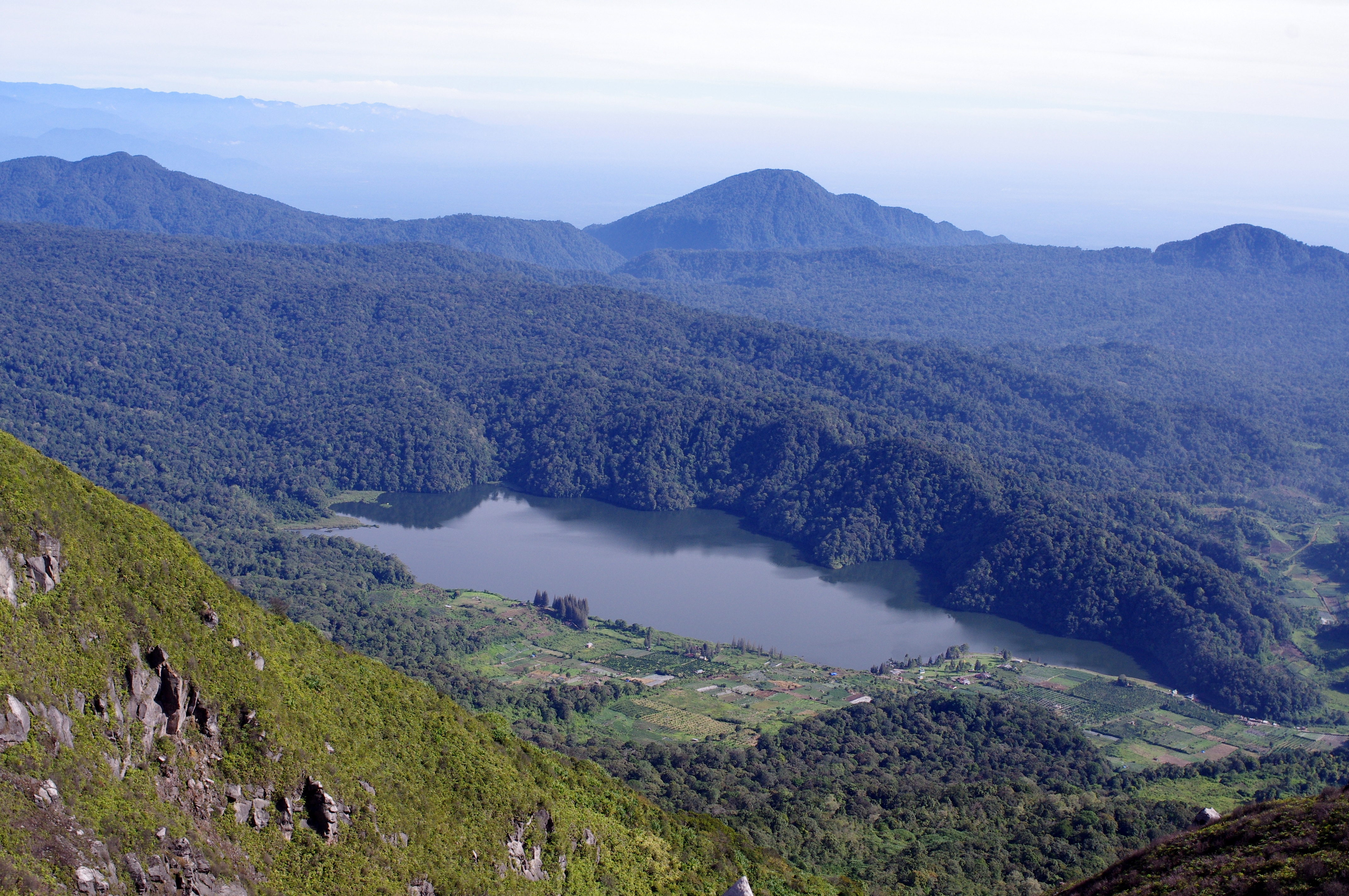|
Sei Bingai
Sei Bingai is a subdistrict of Langkat Regency. It borders Binjai to the north, Kuala and Salapian to the west, Deli Serdang Regency to the east, and Karo Regency to the south. Most people in Sei Bingai are Karo. A majority of people in Sei Bingai are Muslims, as the Karo are predominantly, but not entirely Christian in this area. Agriculture There are 6,509 hectares of oil palm, 6,077 hectares of sawah (wet rice), 7,125 hectares of maize, 1,449 hectares of Natural rubber, 1,150 hectares of cocoa bean The cocoa bean (technically cocoa seed) or simply cocoa (), also called the cacao bean (technically cacao seed) or cacao (), is the dried and fully fermented seed of '' Theobroma cacao'', from which cocoa solids (a mixture of nonfat substa ...s, 720 hectares of sugar palm, 308 hectares of pinang, among other crops, grown in the area. There is also a palm oil factory in Tanjung Gunung, along with other minor cottage industries. References {{reflist Langkat Regency ... [...More Info...] [...Related Items...] OR: [Wikipedia] [Google] [Baidu] |
Subdistricts Of Indonesia
In Indonesia, village or subdistrict is the fourth-level subdivision below a district, regency/city, and province. There are a number of names and types for villages in Indonesia, with ''desa'' (rural village) being the most frequently used for regencies and ''kelurahan'' (urban village) for cities. According to the 2019 report by the Ministry of Home Affairs, there are 8,488 urban villages and 74,953 rural villages in Indonesia. Types of villages ''Kelurahan'' ''Kelurahan'' is an urban village terminology primarily used in cities, but also tiny parts of regencies. It is commonly translated to English as subdistrict. The leader of ''kelurahan'' is called ''lurah''. A ''lurah'' is a civil servant appointed by the district head. According to the Regulation of the Minister of Home Affairs Number 31 of 2006, a ''kelurahan'' can be created with the following criteria: *Java and Bali: having at least 4,500 residents or 900 families within an area of at least 3 km2. * Sumatra and ... [...More Info...] [...Related Items...] OR: [Wikipedia] [Google] [Baidu] |
Time In Indonesia
The Indonesian Archipelago geographically stretches across four time zones from UTC+06:00 in Aceh to UTC+09:00 in Papua. However, the Indonesian government recognises only three time zones in its territory, namely: *Western Indonesia Time (WIB) — seven hours ahead ( UTC+07:00) of the Coordinated Universal Time (UTC); *Central Indonesia Time (WITA) — eight hours ahead ( UTC+08:00) of UTC; *Eastern Indonesia Time (WIT) — nine hours ahead ( UTC+09:00) of UTC. The boundary between the Western and Central time zones was established as a line running north between Java and Bali through the provincial boundaries of West and Central Kalimantan. The border between the Central and Eastern time zones runs north from the eastern tip of Indonesian Timor to the eastern tip of Sulawesi. Daylight saving time (DST) is no longer observed anywhere in Indonesia. Current usage In Indonesia, the keeping of standard time is divided into three time zones: These time zones were first obs ... [...More Info...] [...Related Items...] OR: [Wikipedia] [Google] [Baidu] |
Arenga Pinnata
''Arenga pinnata'' (syn. ''Arenga saccharifera'') is an economically important feather palm native to tropical Asia, from eastern India east to Malaysia, Indonesia, and the Philippines in the east. Common names include sugar palm, areng palm (also aren palm or arengga palm), black sugar palm, and kaong palm, among other names. Description It is a medium-sized palm, growing to tall, with the trunk remaining covered by the rough old leaf bases. The leaves are long and broad, pinnate, with the pinnae in 1–6 rows, long and broad. The fruit is subglobose, diameter, green maturing black. Ecology ''A. pinnata'' suffers from the Red Palm Weevil, '' Rhynchophorus ferrugineus''. . Page 247. ''A. pinnata'' is one of the major hosts for ''R. ferrugineus'' in China. It is not a threatened species, though it is locally rare in some parts of its range. It serves as an important part of the diet of several endangered species, including cloud rats of the genus ''Phloeom ... [...More Info...] [...Related Items...] OR: [Wikipedia] [Google] [Baidu] |
Cocoa Bean
The cocoa bean (technically cocoa seed) or simply cocoa (), also called the cacao bean (technically cacao seed) or cacao (), is the dried and fully fermented seed of '' Theobroma cacao'', from which cocoa solids (a mixture of nonfat substances) and cocoa butter (the fat) can be extracted. Cocoa beans are the basis of chocolate, and Mesoamerican foods including tejate, an indigenous Mexican drink that also includes maize, and pinolillo, a similar Nicaraguan drink made from a cornmeal & cocoa powder. Etymology The word ''cocoa'' comes from the Spanish word , which is derived from the Nahuatl word . The Nahuatl word, in turn, ultimately derives from the reconstructed Proto-Mixe–Zoquean word ''kakawa''. Used on its own, the term ''cocoa'' may also mean: * Hot cocoa, the drink more known as '' hot chocolate'' Terms derived from ''cocoa'' include: * Cocoa paste, ground cocoa beans: the mass is melted and separated into: ** Cocoa butter, a pale, yellow, edible fa ... [...More Info...] [...Related Items...] OR: [Wikipedia] [Google] [Baidu] |
Natural Rubber
Rubber, also called India rubber, latex, Amazonian rubber, ''caucho'', or ''caoutchouc'', as initially produced, consists of polymers of the organic compound isoprene, with minor impurities of other organic compounds. Thailand, Malaysia, and Indonesia are three of the leading rubber producers. Types of polyisoprene that are used as natural rubbers are classified as elastomers. Currently, rubber is harvested mainly in the form of the latex from the rubber tree (''Hevea brasiliensis'') or others. The latex is a sticky, milky and white colloid drawn off by making incisions in the bark and collecting the fluid in vessels in a process called "tapping". The latex then is refined into the rubber that is ready for commercial processing. In major areas, latex is allowed to coagulate in the collection cup. The coagulated lumps are collected and processed into dry forms for sale. Natural rubber is used extensively in many applications and products, either alone or in combination ... [...More Info...] [...Related Items...] OR: [Wikipedia] [Google] [Baidu] |
Maize
Maize ( ; ''Zea mays'' subsp. ''mays'', from es, maíz after tnq, mahiz), also known as corn ( North American and Australian English), is a cereal grain first domesticated by indigenous peoples in southern Mexico about 10,000 years ago. The leafy stalk of the plant produces pollen inflorescences (or "tassels") and separate ovuliferous inflorescences called ears that when fertilized yield kernels or seeds, which are fruits. The term ''maize'' is preferred in formal, scientific, and international usage as a common name because it refers specifically to this one grain, unlike ''corn'', which has a complex variety of meanings that vary by context and geographic region. Maize has become a staple food in many parts of the world, with the total production of maize surpassing that of wheat or rice. In addition to being consumed directly by humans (often in the form of masa), maize is also used for corn ethanol, animal feed and other maize products, such as corn starch a ... [...More Info...] [...Related Items...] OR: [Wikipedia] [Google] [Baidu] |
Oil Palm
''Elaeis'' () is a genus of palms containing two species, called oil palms. They are used in commercial agriculture in the production of palm oil. The African oil palm '' Elaeis guineensis'' (the species name ''guineensis'' referring to its country of origin) is the principal source of palm oil. It is native to west and southwest Africa, occurring between Angola and Gambia. The American oil palm '' Elaeis oleifera'' () is native to tropical Central and South America, and is used locally for oil production. Description Mature palms are single-stemmed, and can grow well over tall. The leaves are pinnate, and reach between long. The flowers are produced in dense clusters; each individual flower is small, with three sepals and three petals. The palm fruit is reddish, about the size of a large plum, and grows in large bunches. Each fruit is made up of an oily, fleshy outer layer (the pericarp), with a single seed (the palm kernel), also rich in oil. Species The two species, ... [...More Info...] [...Related Items...] OR: [Wikipedia] [Google] [Baidu] |
Karo People (Indonesia)
The Karo, or Karonese, are a people of the ''Tanah Karo'' (Karo lands) and part one of Batak people sub-ethnic group from North Sumatera, Indonesia. The Karo lands consist of Karo Regency, plus neighboring areas in East Aceh Regency, Langkat Regency, Dairi Regency, Simalungun Regency and Deli Serdang Regency. In addition, the cities of Binjai and Medan, both bordered by Deli Serdang Regency, contain significant Karo populations, particularly in the Padang Bulan area of Medan. The town of Sibolangit, Deli Serdang Regency in the foothills on the road from Medan to Berastagi is also a significant Karo town. Karoland contains two major volcanoes, Mount Sinabung, which erupted after 400 years of dormancy in 27 August 2010 and Mount Sibayak. Karoland consists of the cooler high lands, and the upper and lower lowlands. The Karolands were conquered by the Dutch in 1904. In 1906, roads to the highlands were constructed, ending the isolation of the highland Karo people. The road li ... [...More Info...] [...Related Items...] OR: [Wikipedia] [Google] [Baidu] |
Karo Regency
Karo Regency is a landlocked regency of North Sumatra, Indonesia, situated in the Barisan Mountains. The regency covers an area of and according to the 2010 census it had a population of 350,479, increasing to 404,998 at the 2020 Census. 60.99% of the regency is forested. Its regency seat is Kabanjahe. The Batak Karo language is spoken in the regency, as well as the Indonesian language. It borders Southeast Aceh Regency in Aceh to the west, Deli Serdang Regency and Langkat Regency to the north, Dairi Regency and Toba Samosir Regency to the south, and Deli Serdang Regency and Simalungun Regency to the east. Economy The GDP per capita of Karo Regency in 2005 was 11.65 million rupiah, approximately US$1,200. 74% of the population work in agriculture, which comprises 60% of regional GDP. The second-largest sector is government, which comprises 11% of the regional GDP. Administrative divisions The regency is divided administratively into seventeen districts A district is ... [...More Info...] [...Related Items...] OR: [Wikipedia] [Google] [Baidu] |
Deli Serdang Regency
Deli Serdang ( id, Kabupaten Deli Serdang; Jawi: دلي سردڠ) is a regency in the Indonesian province of North Sumatra. It surrounds the city of Medan, and also borders the city of Binjai, which is effectively a bedroom community for Medan. It occupies an area of 2,497.72 sq.km (964.38 sq miles). The capital of the district is Lubuk Pakam, which is located approximately 30 km east of Medan. The national census of 2000 recorded 1,573,987 people, but by 2010 the regency's population increased by 13.76% to 1,790,431,Biro Pusat Statistik, Jakarta, 2011. and at the 2020 Census the total was 1,931,441. The official estimate as at mid 2021 was 1,941,374. Kualanamu International Airport is located in this regency. Neighbouring areas The external boundaries of the regency are with: * To the north: the Langkat Regency and the Strait of Malacca. * To the south: the Karo Regency and Simalungun Regency. * To the east: the Serdang Bedagai Regency and the Strait of Malacca. ... [...More Info...] [...Related Items...] OR: [Wikipedia] [Google] [Baidu] |
Salapian
Salapian is a subdistrict of Langkat Regency. Javanese people are in the majority (56% as of 2007) with 37% Karo. As against Karo Regency, the vast majority of Karo in Salapian are Muslims - the population is 81% Muslim and 13% Protestant. In all parts of Salapian, there is a Muslim majority, although it varies between villages. There are 53 mosques, 40 mushollas, 22 churches, and 2 vihara in the subdistrict. The biggest town in Salapian is Tanjung Langkat, on the road between Medan, Binjai, Kuala and Bohorok. The subdistrict is fairly large (511 square km), and the majority of roads are mere dirt tracks, with many in terrible condition. It borders Selesai to the north, Karo Regency to the south, Kuala and Selesai to the east, and Bohorok Bahorok or Bohorok is a district of Langkat Regency. Its capital is Bohorok town, and Bukit Lawang is a major local tourist attraction for viewing orangutans. The Bohorok river, which is a tributary of the Wampu River, joins the Wampu in ... [...More Info...] [...Related Items...] OR: [Wikipedia] [Google] [Baidu] |
Kuala
Kuala is a town and administrative district of Langkat Regency in northern Sumatra, Indonesia. It borders Selesai to the north, Salapian to the west, and Sei Bingai to the south and east. Most people in Kuala are Javanese people, with a significant Karo population. Although most Karo are Christian, many are also Muslim, and as the Javanese are nearly 100% Muslim, Kuala subdistrict is 80% Muslim. Kuala town itself had a population of 12,459 in 2010, making it by far the largest settlement in the district. It lies on the main road between Binjai and Bukit Lawang. Agriculture Agriculture in Kuala District is relatively homogenous, with 6,425 hectares of oil palm, 4,243 hectares of sawah (wet rice), 880 hectares of maize and 3,466 hectares of natural rubber Rubber, also called India rubber, latex, Amazonian rubber, ''caucho'', or ''caoutchouc'', as initially produced, consists of polymers of the organic compound isoprene, with minor impurities of other o ... [...More Info...] [...Related Items...] OR: [Wikipedia] [Google] [Baidu] |








